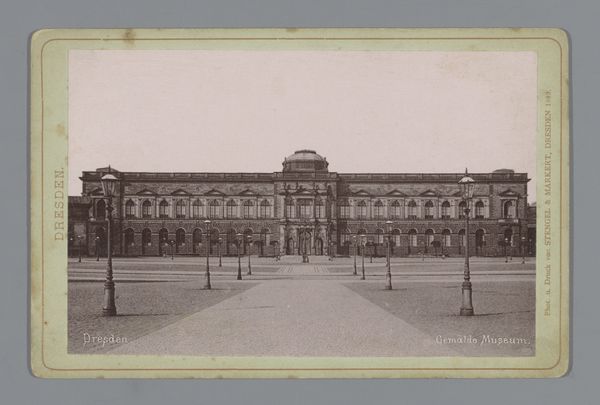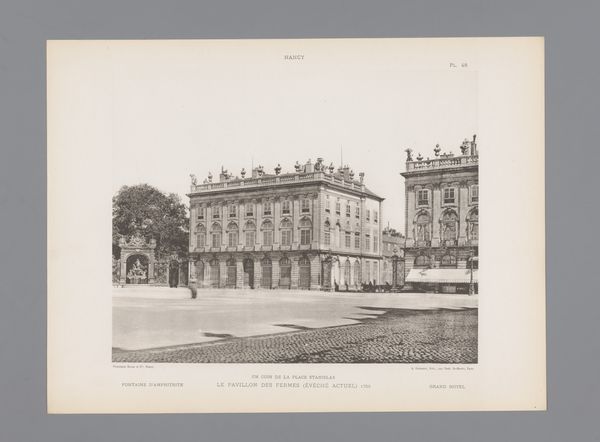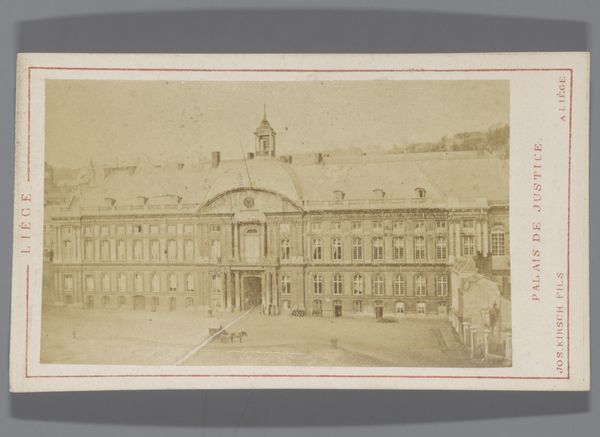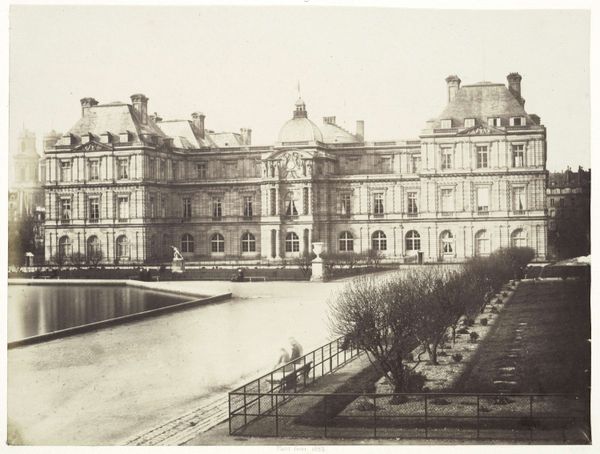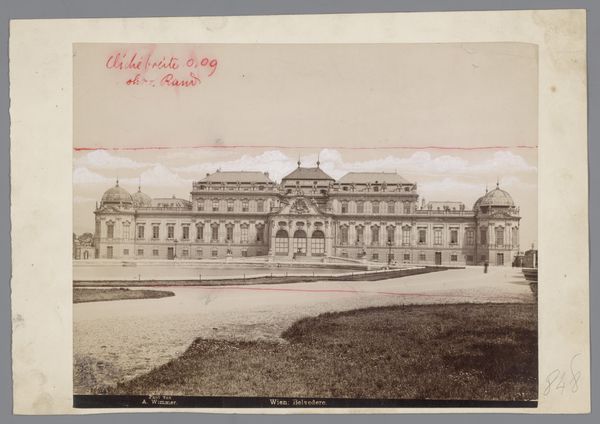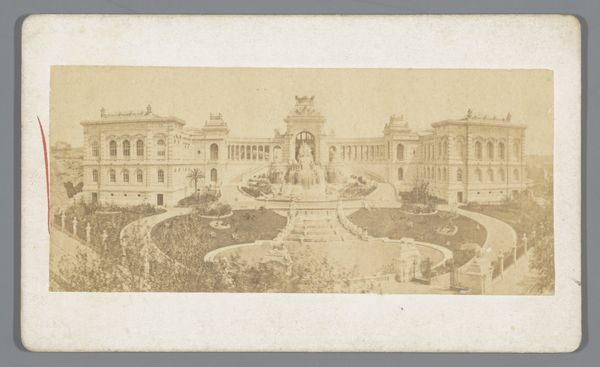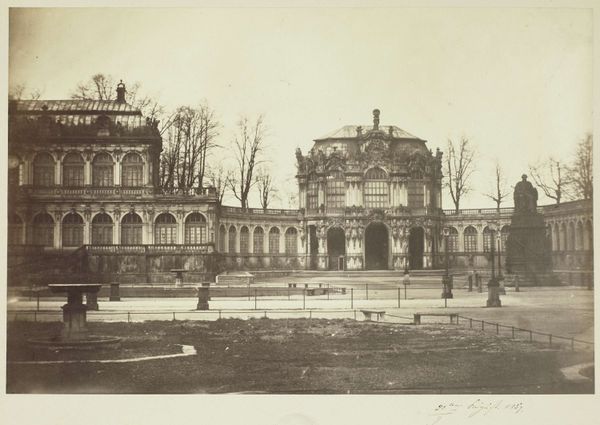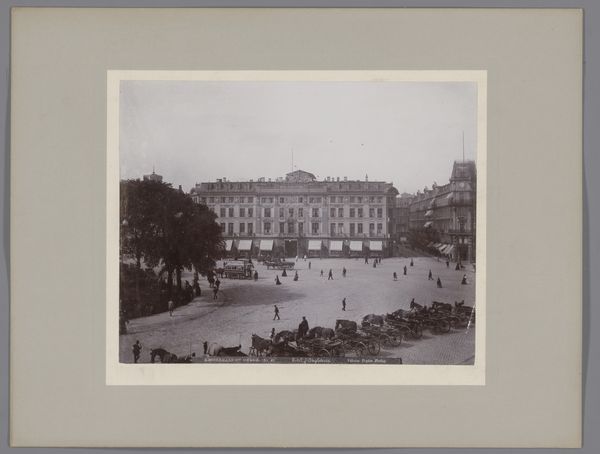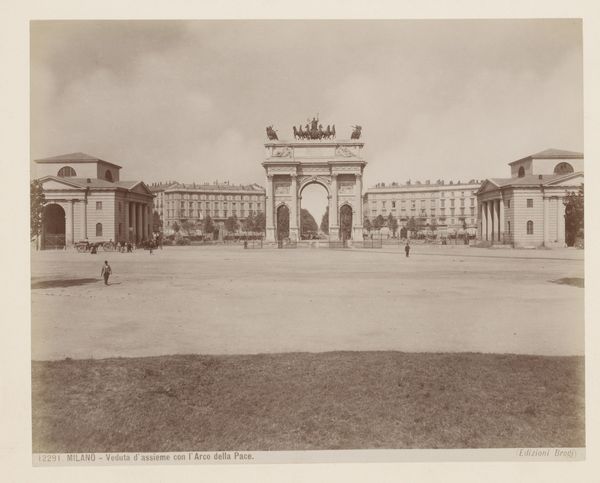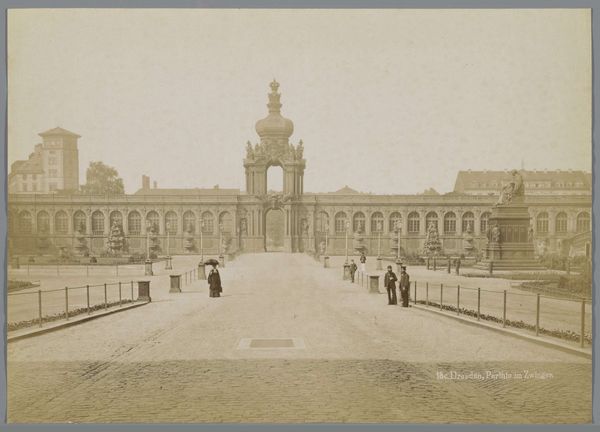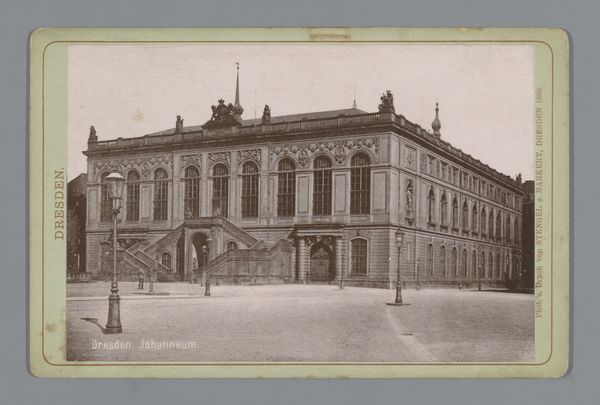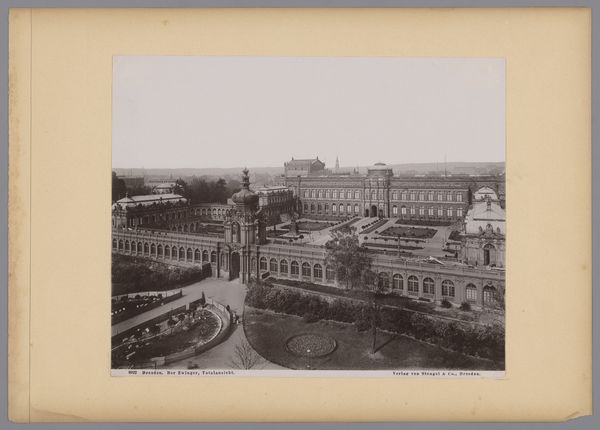
Dimensions: height 109 mm, width 168 mm
Copyright: Rijks Museum: Open Domain
Curator: Looking at this stately scene, we're observing the albumen print made by Stengel & Markert in 1887, titled “Gezicht op het westelijke deel van de Zwinger in Dresden”, or View of the Western Part of the Zwinger in Dresden. It’s part of the Rijksmuseum's collection. Editor: It’s strikingly symmetrical, almost severe. The low contrast and perspective makes the Zwinger feel imposing, and a little remote, doesn't it? Curator: Absolutely. Photography at this time sought to capture architecture in a very specific way. The Zwinger, representing Neoclassical grandeur, stood as a symbol of power, meticulously documented here for posterity. Editor: Yes, and even the perspective seems designed to emphasize the order and control that the architecture embodies. The city, and the individuals in the image are almost irrelevant—secondary to the institution. Curator: This period in photography and art really reflected a desire to impose order and celebrate authority, with institutions like the Zwinger being visual manifestations of these principles. This image wasn't just documentation, it was participating in constructing an idea of German cultural heritage. Editor: It also speaks volumes about access. The cleanliness and open space implies privilege—who had the time to stroll here? Whose stories were erased to preserve that ideal? Curator: Indeed. Examining these photographs today allows us to understand the values of that era. While celebrating architectural achievement, we can also reflect on what was left out, the counter-narratives ignored or actively suppressed in such formal depictions. Editor: I agree. It reminds us that beauty and grandeur can mask social inequities. The photograph preserves a moment, but also a specific perspective, a specific power dynamic. It is, in essence, a product of its time and should be interrogated as such. It is a fascinating reminder to question whose story is being told. Curator: Precisely. The Zwinger is much more than brick and mortar, and this print offers far more than architectural record, but really a cultural statement with powerful social implications.
Comments
No comments
Be the first to comment and join the conversation on the ultimate creative platform.
